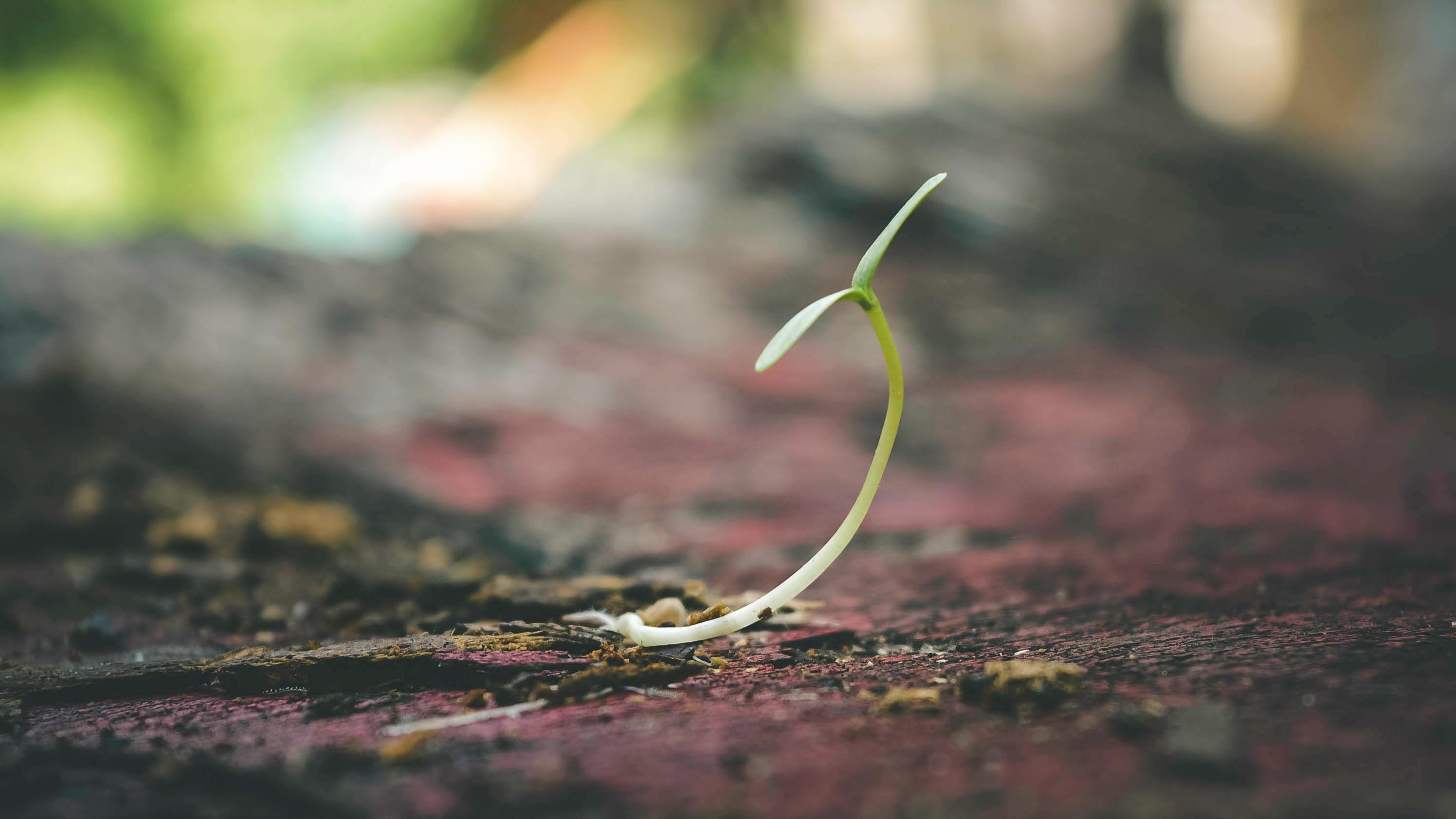Palm trees are an iconic part of many landscapes and can add a tropical feel to any garden. Growing a palm tree from seed is surprisingly easy, and with the right care and patience, you can have a thriving palm tree in no time. In this guide, we’ll cover the basics of how to plant palm tree seeds.1. Collect the seeds from a healthy and ripe palm tree. Make sure to collect them before they fall on the ground.
2. Soak the seeds in lukewarm water for 12-24 hours. This will help to soften the outer layer of the seed and allow it to germinate more easily.
3. Place the seeds in a container filled with moist peat moss or potting soil, and cover them lightly with soil.
4. Put the container in a warm place that has temperatures between 70-90°F (21-32°C). The warmer temperature will help speed up germination, which can take up to 6 months or more depending on the variety of palm tree seed you are planting.
5. Monitor the soil and keep it moist but not wet by misting it regularly with water. The seedlings should emerge from the soil after several months, at which point they can be transplanted into individual pots or planted outdoors in their permanent location in well-draining soil.
Gathering Materials Needed for Planting Palm Tree Seeds
Planting palm tree seeds is a great way to get started growing your own tropical tree. To ensure success, you need to have the right materials on hand. Here’s a list of the items you’ll need before you get started:
1. Seeds: You can purchase palm tree seeds from nurseries or online. Make sure they are fresh and still viable before planting them.
2. Containers: Choose containers with adequate drainage holes so water can escape. Clay pots are ideal since they allow the soil to breathe and keep the roots cool.
3. Soil: The best soil for palm trees is a well-draining potting mix combined with equal parts perlite and vermiculite or sand for extra drainage and aeration.
4. Fertilizer: Palm trees need regular fertilizing to stay healthy and produce new growth so use a slow-release fertilizer formulated specifically for palms or one with an N-P-K ratio of 8-2-12 or 8-4-8 once every two months during the growing season (March–October).
5. Water: Water your newly planted seeds regularly, but don’t overdo it—too much water can cause root rot and kill your young plants quickly. A good rule of thumb is to water when the top inch of soil feels dry to the touch.
By having all these materials on hand before you start planting, you’ll be ready to create your own tropical paradise in no time!
Choosing a Suitable Location for Planting Palm Tree Seeds
When choosing a suitable location for planting palm tree seeds, it is important to consider the climate as well as the soil type and drainage of the area. In general, palms prefer warm climates with ample rainfall and plenty of sunlight. If you live in a colder climate, you may need to provide additional protection for your palms during cold winters.
The soil type should be well-draining and preferably loamy or sandy. If your soil is clay-based, make sure to dig down several inches to ensure good drainage before planting. Additionally, palms prefer slightly acidic soils with a pH level between 5 and 7.5.
It is also important to consider the amount of space available for the palm tree’s roots and canopy when selecting its location. Avoid areas with limited space or those near driveways, sidewalks or buildings where their roots might be disturbed or damaged by construction activities.
Finally, make sure that your planting site does not have any potential competition from other plants or trees that could compete for moisture and nutrients needed by the palm tree. The ideal location should have enough room for the palm to grow without too much competition from other plants or trees.
By considering all these factors carefully, you can select an ideal location for planting your palm tree seeds that will provide them with the best chance of survival and growth over time.
Dig the Holes Needed for Planting Palm Tree Seeds
Planting palm tree seeds is an easy and rewarding process, but it is important to do the proper preparation before jumping in. One of the first steps is to dig holes for the seeds. The holes should be approximately four inches deep and wide enough to accommodate the seed and a bit of soil around it. It is a good idea to make sure that all of the holes are roughly the same size, as this will help ensure that the young palms come up at an even rate.
It is also important to make sure that the soil is loose and well-drained before planting. If necessary, you may need to add some organic material or sand to ensure proper drainage. When digging your holes, make sure to take care not to damage any existing roots or plants in your area as this could lead to problems with your palm tree later on. Once you have your holes dug, you can start planting your palm tree seeds!
Planting Palm Tree Seeds
Planting palm tree seeds is a great way to grow your own tropical oasis. To get started, you’ll need to prepare the soil in an area that is sunny and warm. Dig several holes that are about 2 inches deep and spaced about 2 feet apart. Then, place the palm tree seeds in the holes and cover them with soil. Make sure to water the soil regularly so that it stays moist and helps the seeds to germinate. Once the seedlings have sprouted, you can gradually increase their exposure to sunlight until they are ready to be transplanted into your garden or yard. With a bit of patience and care, you’ll soon have a lush grove of tropical palms!

Mulching Around the Planting Area of the Palm Tree Seeds
Mulching around the planting area of palm tree seeds is an important step for successful growth. It helps retain moisture, reduce weed competition, and insulates the soil from extreme temperatures. It is also important for increasing fertility levels and promoting healthy root development.
When mulching around a palm tree seed, it’s important to choose a type of mulch that will not inhibit the growth of the tree. Organic materials such as wood chips, straw, grass clippings, and compost are all good choices. It’s also important to make sure that the mulch is applied at least two inches deep and that it covers only the root zone of the tree. Keeping mulch away from the trunk can help avoid diseases and insect damage.
It’s also important to keep the mulch away from sidewalks and other walkways because it can lead to slippery surfaces when wet. When adding new mulch each year, it’s best to remove any old existing material first to avoid smothering new growth.
It’s also essential to water regularly when mulching around a palm tree seed. Mulch helps retain moisture but should not be used as a replacement for regular watering. Keeping soil consistently moist will help promote healthy root development and increase overall plant health.
Overall, choosing an appropriate type of mulch and applying it correctly around a palm tree seed can greatly improve its chances for successful growth in its new environment while helping protect it from disease-causing agents and extreme temperatures. With proper care and maintenance, your palm trees will thrive for many years!
Water the Newly Planted Palm Tree Seeds Regularly
When planting palm tree seeds, it is important to keep them well-watered. This ensures that the seeds will germinate and establish healthy root systems. Watering should be done on a regular basis, as this will help to keep the soil moist and promote healthy growth of the seedlings. It is also important to ensure that the soil is not waterlogged, as this can cause root rot and prevent the plants from thriving. Once the seedlings are established, they should be watered more deeply and less frequently. This will help to encourage deep root growth and a strong overall plant structure. With proper watering, newly planted palm tree seeds can grow into healthy trees that will live for many years to come.
It is important to note that different types of palm trees have different requirements when it comes to watering. Some varieties require more frequent watering than others, so it is best to research specific species before planting them in order to determine their individual needs. Additionally, be sure not to over-water your newly planted palms as this can cause damage to their delicate root systems. Paying close attention to your newly planted palm trees and following good watering protocols can help ensure that they grow strong and healthy for many years.
Fertilize Newly Planted Palm Tree Seeds
Planting palm tree seeds is an exciting way to bring a tropical touch to your garden or landscaping. But it’s important to fertilize newly planted palm tree seeds, so they can grow and thrive. Fertilizing your newly planted palm tree seeds will provide them with the essential nutrients they need for healthy growth.
When planting your palm tree seeds, be sure to use soil that is nutrient-rich and well-draining. This will help the seeds get off to a good start and ensure that they receive the necessary nutrients for healthy growth. After planting, add a slow-release fertilizer at the base of your newly planted palm trees in order to help them develop strong roots and healthy foliage.
It’s important to note that over-fertilizing can cause more harm than good, so try to stick to the recommended levels on the package label or consult a professional for advice on how much fertilizer you should use for your specific type of soil and plant species. Fertilizer should be applied at least twice per year, once in early spring and once in late fall or winter.
It’s also important to water deeply after applying fertilizer. Deep watering helps ensure that the fertilizer reaches the roots of the plants where it can be absorbed more easily. In addition, deep watering encourages root growth which is essential for healthy plants.
Finally, remember that fertilizing newly planted palm tree seeds is an important step in helping them achieve their full potential as mature plants. With proper care and fertilization, palms can become strong and beautiful additions to any landscape!

Conclusion
Planting palm tree seeds is a rewarding experience. Not only will you have the satisfaction of being able to grow your own tree, but you can also enjoy the beautiful sight and shade of a mature palm tree. By following the steps outlined here, you can easily plant your palm tree seeds and see the fruits of your labor in no time.
If planting from fresh seeds, be sure to properly soak and prepare the seed prior to planting. Make sure to provide adequate drainage for your new seedling and be sure to provide plenty of light and water. With the proper care, your palm tree should grow quickly into a mature plant that will provide years of enjoyment.
Lastly, don’t forget to check with local authorities before planting any type of tree in your area as some areas may have restrictions on certain species of trees. With careful planning and dedication, you can proudly say that you planted your own palm trees from seed!

